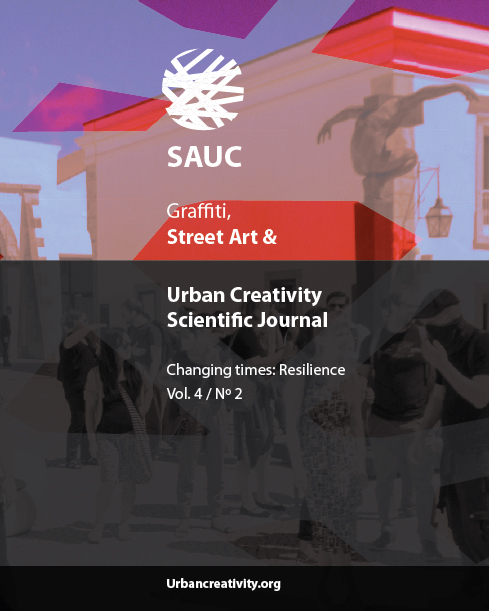Graffiti as a Palimpsest
DOI:
https://doi.org/10.25765/sauc.v4i2.141Keywords:
Palimpsest, narratives, embodiment, art experience, cultural cognition, cognitive scienceAbstract
Graffiti can be viewed as stories about embodied identities of the self and others which can be shared in intersubjective discourse, visual communication of varying content and motives, and utilizing specific technology and mediums. Graffiti’s palimpestuous nature, in its physical and symbolic forms of layering information, is present in production and perceiving graffiti. A creator and a reader of graffiti are both palimpsesting the work, acting as narrators of their own mental sheets. The concept of graffiti as a palimpsest can be exemplified for example in graffiti art where the interpretation of a work of art depends on the properties of the work, the perceiver and the social and institutional agreements. How graffiti are interpreted is informed by perceiving individuals’ characters, such as knowledge and skills, as well as the cultural and sociohistorical context where these individuals are immersed and act.
Downloads
Global Statistics ℹ️
|
201
Views
|
0
Downloads
|
|
201
Total
|
|
Downloads
Published
How to Cite
Issue
Section
License
Those authors who publish in this journal accept the following terms:
-
Authors retain copyright.
-
Authors transfer to the journal the right of first publication. The journal also owns the publishing rights.
-
All published contents are governed by an Attribution-NoDerivatives 4.0 International License.
Access the informative version and legal text of the license. By virtue of this, third parties are allowed to use what is published as long as they mention the authorship of the work and the first publication in this journal. If you transform the material, you may not distribute the modified work. -
Authors may make other independent and additional contractual arrangements for non-exclusive distribution of the version of the article published in this journal (e.g., inclusion in an institutional repository or publication in a book) as long as they clearly indicate that the work was first published in this journal.
- Authors are allowed and recommended to publish their work on the Internet (for example on institutional and personal websites), following the publication of, and referencing the journal, as this could lead to constructive exchanges and a more extensive and quick circulation of published works (see The Effect of Open Access).













